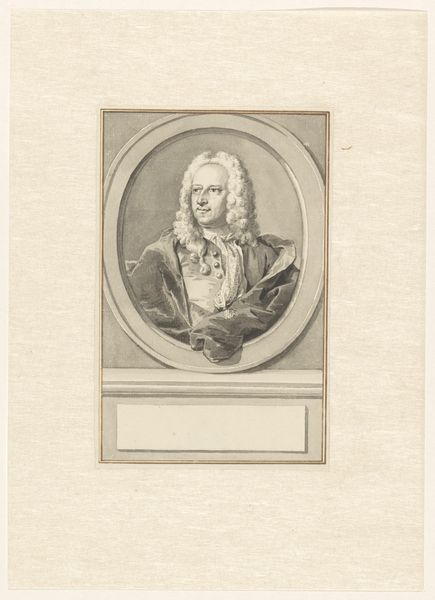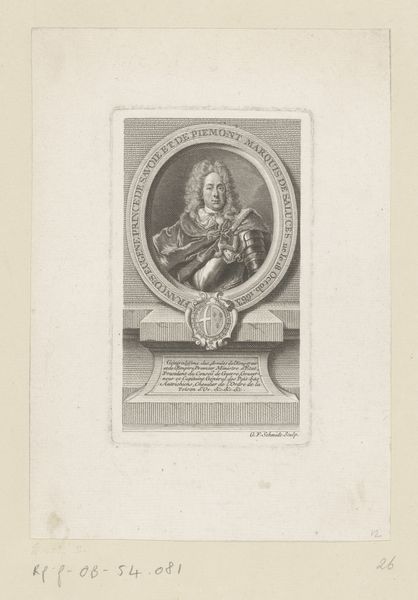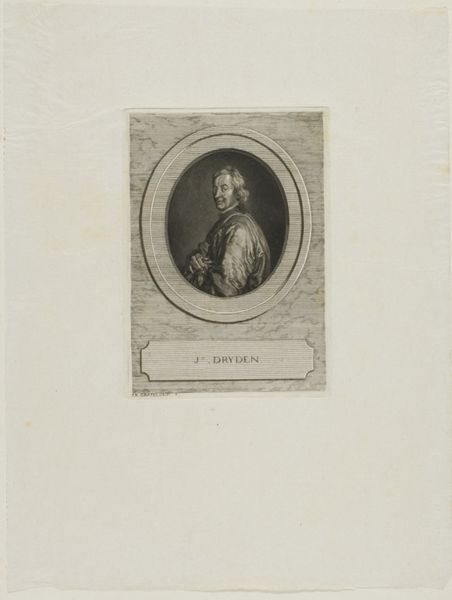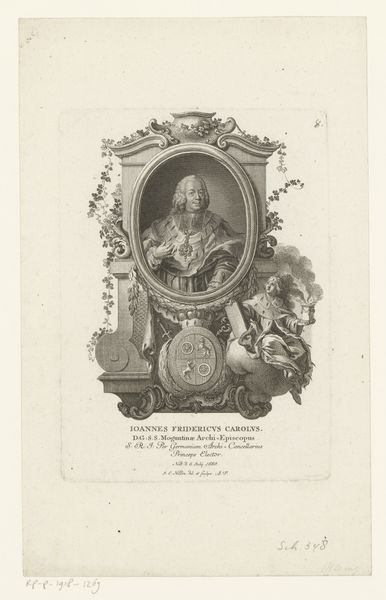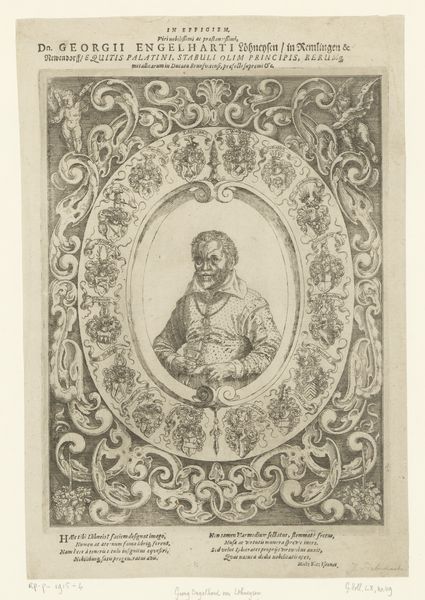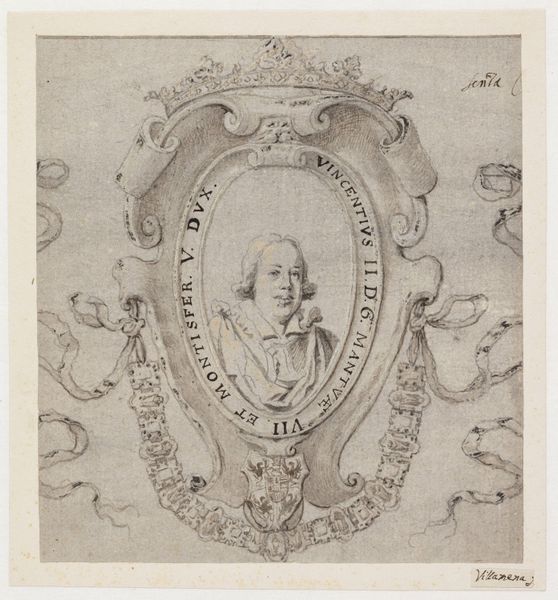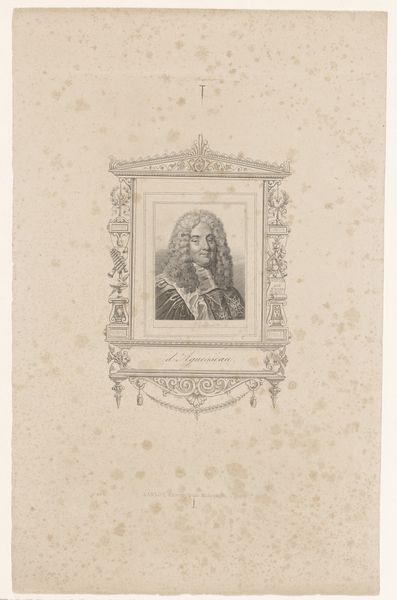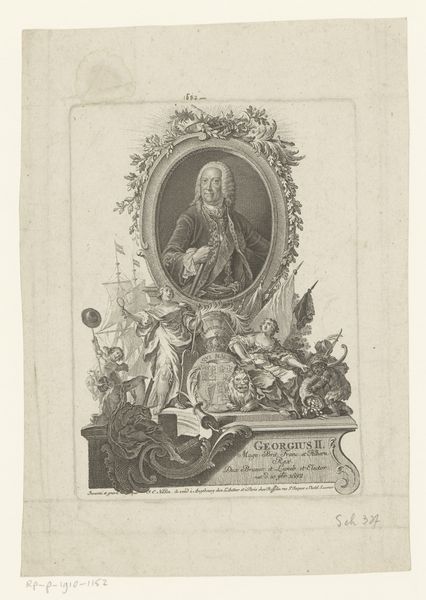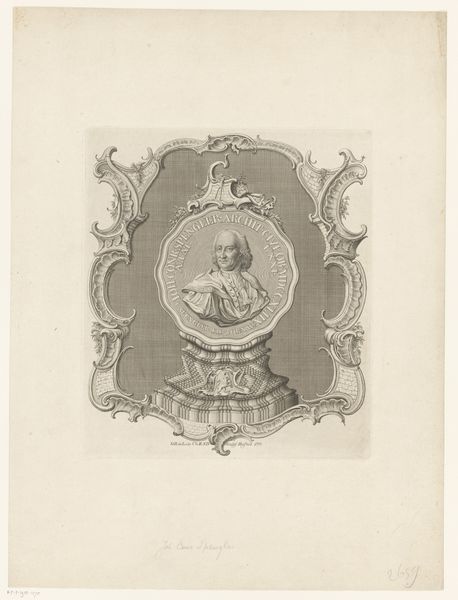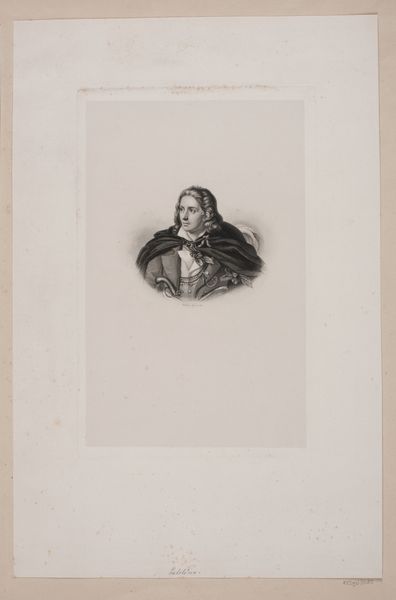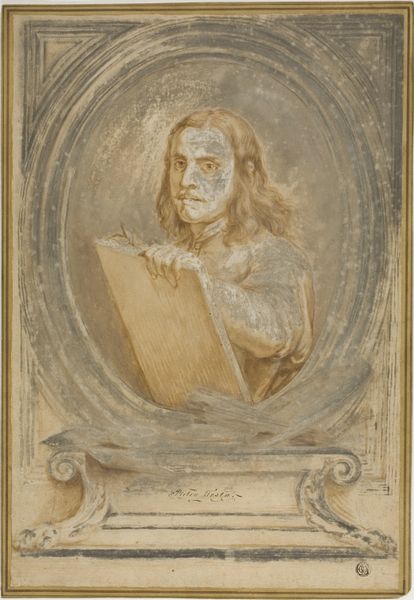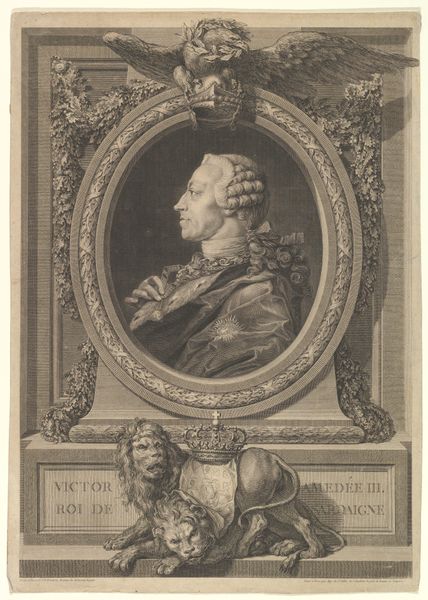
carving, relief, sculpture, wood
#
portrait
#
carving
#
baroque
#
relief
#
sculpture
#
ceramic
#
wood
#
history-painting
Dimensions: height 10 cm, width 7 cm
Copyright: Rijks Museum: Open Domain
Curator: What strikes you about this piece? It's a wood relief carving of Prince William III of Orange, dating from around 1662 to 1665. Editor: Its muted tones create a powerful impression, one of delicate, yet determined regality, embedded as it is within an intricate wooden surround. Curator: Yes, there's a formality embedded within the Baroque framework. Note how the sculptor uses layering, from the carved wooden frame to the figure of William himself. It directs the gaze inexorably inward, framing William as the centre of the artwork and by extension, perhaps, the nation. Editor: Absolutely, and considering the time period, there’s an implicit commentary on power and representation here. William, as Prince of Orange, carries the weight of societal expectation and the looming battles in the Anglo-Dutch wars—evident not just in his portraiture, but in the symbolism imbued by the attire and the sceptre. How interesting to reflect on how identities were shaped by the intersection of power, heritage, and conflict during this time. Curator: The tight composition is masterfully achieved with linear elements. We have, within a fairly restricted area, incredible detail—observe the contours of the prince's face against the high ruff collar. Editor: It makes me wonder, though, about the choices made in representation. He's young, almost boyish, yet carries symbols of governance. The craftsmanship elevates him, certainly, but does it fully mask the political turmoil? Is he rendered here as merely an emblem? Curator: Perhaps, but it’s in the rendering of emblems that such figures take on enduring significance beyond any singular time. By alluding to permanence and idealization, an allegorical presence begins to emerge, allowing viewers across centuries to experience their effect. Editor: I see what you mean, though my eye keeps getting drawn to the contextual complexities that informed not just its subject but its potential intended audience and placement. The craftsmanship certainly indicates that the elite enjoyed the comfort afforded by luxury items in an unstable period. Curator: A fitting thought, and one which allows this relatively small carving to occupy a rather large space in understanding how both personal and political realities take form across time. Editor: Indeed; I walk away seeing so much more now beyond what's superficially depicted within this small tableau of power.
Comments
No comments
Be the first to comment and join the conversation on the ultimate creative platform.
